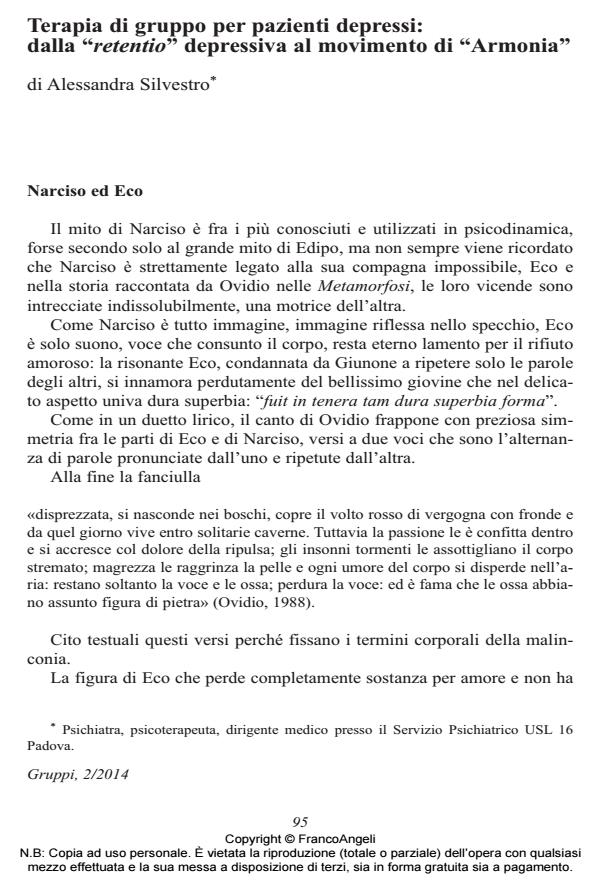Group psychotherapy for depressed patients: from depressive "retentio" to the movement of "Harmony,
Journal title GRUPPI
Author/s Alessandra Silvestro
Publishing Year 2014 Issue 2014/2
Language Italian Pages 12 P. 95-106 File size 83 KB
DOI 10.3280/GRU2014-002010
DOI is like a bar code for intellectual property: to have more infomation
click here
Below, you can see the article first page
If you want to buy this article in PDF format, you can do it, following the instructions to buy download credits

FrancoAngeli is member of Publishers International Linking Association, Inc (PILA), a not-for-profit association which run the CrossRef service enabling links to and from online scholarly content.
The article describes an eight-year experience of group psychotherapy for depressed patients in a Mental Health Center. The group worked through yearly cycles, allowing different patients to take part in both one or more cycles. Through the adoption of a psychodynamic- phenomenological model, the author was able to explore the time experienced from depressive "retentio" to narrative mobilization. Freud’s concept of Nachträglichkeit was considered. Clinical examples illustrate how time assumes transindividual aspects within a group. The group experiences phases of timelessness, or, in other cases - notably in melancholia - the past cannot be mourned and the future cannot be envisaged, and time seems to be frozen in a moment which lasts forever, like death itself (Birksted-Bren). In group psy chotherapy, processing opens up to "resonance time", where present, future and past play together and allow for dynamic movement in the relationship.
Keywords: Depression, temporality, Nachträglichkeit, group psychotherapy, group process, institution.
Alessandra Silvestro, Terapia di gruppo per pazienti depressi: dalla "retentio" depressiva al movimento di "Armonia" in "GRUPPI" 2/2014, pp 95-106, DOI: 10.3280/GRU2014-002010